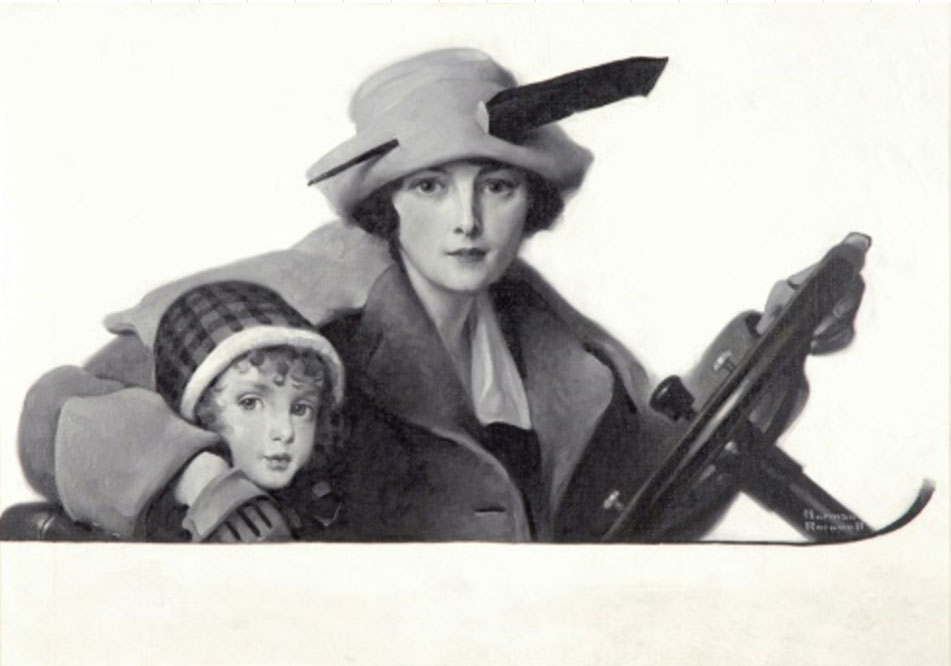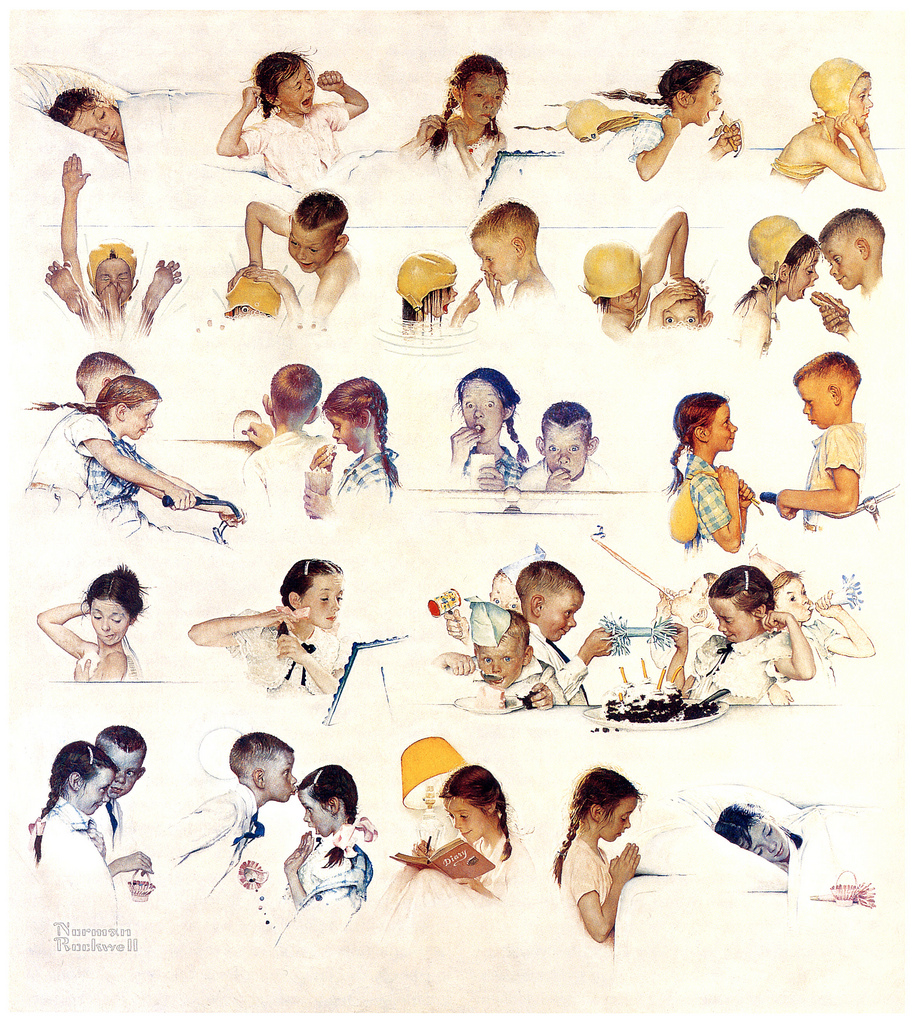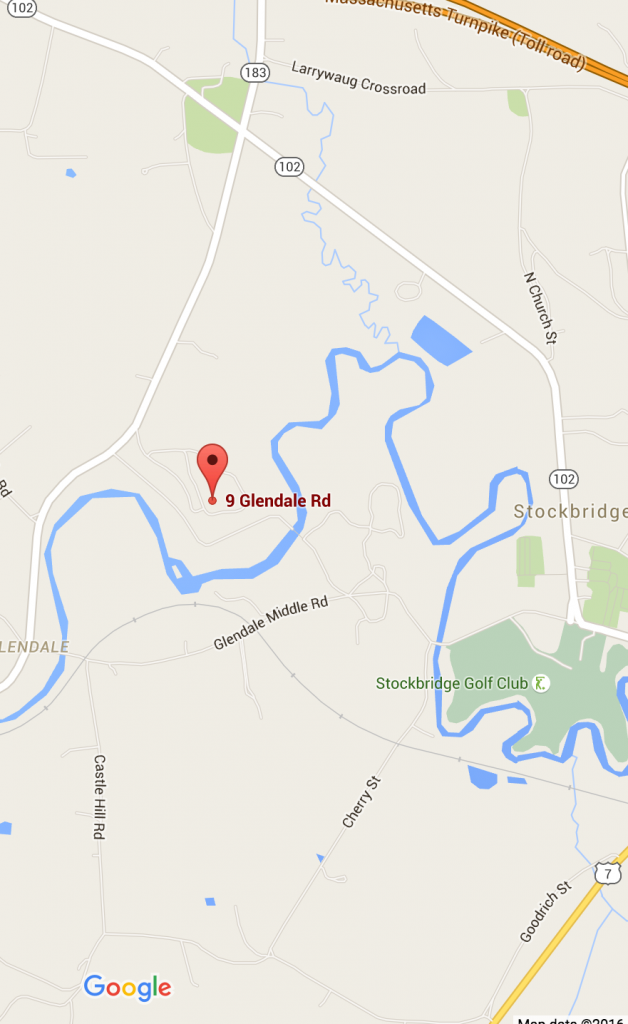Norman Rockwell and the Twentieth-Century Woman
ABOUT THE EXHIBITION
In his youth, Norman Rockwell likely saw portrayals of beautiful women on the covers and pages of the magazines that he would eventually work for. At the turn of the twentieth-century, Charles Dana Gibson created the elegant and impetuous “Gibson Girl,” a youthful, stylish woman with an hourglass figure and long necktopped with voluminous, upswept hair— an object of desire in her time.
Busy with early commissions for the Boy Scouts of America and children’s magazines, Rockwell mastered the art of painting freckled-faced boys with readable expressions, but his real ambition was to paint a cover for The Saturday Evening Post. Trying to emulate the Post’s covers, Rockwell created his version of a gorgeous Gibson-style girl being kissed by an elegantly clad man. When Rockwell asked his cartoonist friend for his opinion of the work, Clyde Forsythe declared it to be “Terrible. Awful. Hopeless. You can’t do a beautiful seductive woman. She looks like a tomboy.…” Forsythe advised Rockwell to stick to what he did best, kids. Created in 1916, Rockwell’s first Post cover, Boy with Baby Carriage, makes it clear that he did just that.
This exhibition takes a lively look at Rockwell’s approach to painting women and girls. According to Rockwell, “…I paint the kind of girls your mother would want you to marry,” but in fact, many of his female protagonist were strong and saavy. In his early career, he hired professional female models to pose for him, painting with a narrative realism that made his characters relatable to magazine’s target audience, women. Later, his neighbors, friends, and family members became the subjects of his work, and his images sprang to life with genuine smiles. animated expressions. and more naturalistic rendering. We hope that you’ll enjoy exploring Rockwell’s approach to painting women and girls, and the shifts in his approach that reflected his personal and artistic growth through the years.
ABOUT THE ARTIST
Born in New York City in 1894, Norman Rockwell always wanted to be an artist. At age 14, Rockwell enrolled in art classes at The New York School of Art (formerly The Chase School of Art). Two years later, in 1910, he left high school to study art at The National Academy of Design. He soon transferred to The Art Students League, where he studied with Thomas Fogarty and George Bridgman. Fogarty’s instruction in illustration prepared Rockwell for his first commercial commissions. From Bridgman, Rockwell learned the technical skills on which he relied throughout his long career. Learn more…
MEDIA
VENUE(S)
Norman Rockwell Museum, Stockbridge, MA July 12, 2020 through September 2020
DIRECTIONS
Norman Rockwell Museum
9 Route 183
Stockbridge, MA 01262
413-298-4100 x 221
Download a Printable version of Driving Directions (acrobat PDF).
Important note: Many GPS and online maps do not accurately place Norman Rockwell Museum*. Please use the directions provided here and this map image for reference. Google Maps & Directions are correct! http://maps.google.com/
* Please help us inform the mapping service companies that incorrectly locate the Museum; let your GPS or online provider know and/or advise our Visitor Services office which source provided faulty directions.











